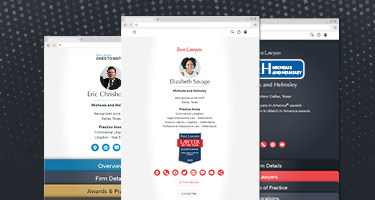By John M. Goralka
Sacramento, CA
Two of the most consequential Supreme Court cases affecting income tax planning did not directly involve income tax issues and did not even include the word “tax” in the opinion. Nevertheless, these cases substantially affect the enforceability of IRS regulations and guidance. The full effect of these decisions will almost certainly require additional litigation in the years to come.
Loper Bright Enterprises v. Raimondo (Docket No. 22-451) was issued by the U.S. Supreme Court on June 28, 2024. Since 1984, courts were required to give deference to agency interpretations of ambiguous statutes. That rule was established in Chevron USA, Inc. v. Natural Resources Defense Council (1984) (467 U.S. 877). Loper overruled the long-standing rule providing judicial deference to agency (including the IRS) interpretations of ambiguous statutes. This deference in simple terms created an “uphill battle” to challenge IRS regulations.
The Supreme Court determined that the rule established by Chevron did not comply with the Administrative Procedure Act. The Supreme Court even looked back to 1803 and held that the Chevron rule of deference violated the landmark holding of the Supreme Court in Marbury v. Madison (1803) (5 U.S. 137), which held that the court decides legal questions by using its own judgment. The net result for tax cases is that the court now decides the best interpretation of a contested statute and not the IRS.
A much different standard
Prior to Loper, the court would determine whether the IRS interpretation was permissible — a much different standard for a taxpayer challenging the IRS interpretation.
Loper recognizes that judicial deference may be appropriate if the statute itself provides that the IRS is to issue regulations or guidance. Even in that case, Loper provides that the courts still have independent authority to police the outer boundaries of the regulations and to ensure that the IRS exercises its discretion in a manner consistent with the Administrative Procedure Act.
Right after Loper, on July 1, 2024, the Supreme Court issued Corner Post, Inc. v. Federal Reserve (Docket No. 22-1008). Corner Post provides that the six-year statute of limitations in 28 USC Section 2401 began to run when the plaintiffs actually suffered an injury rather than from when the rule, regulation or statute became final.
The Anti-Injunction Act (AIA) prevents pre-enforcement of judicial review. If the statute of limitations begins with the date of enactment of the regulation, then the six-year statute under Section 2401 of the AIA would run before the plaintiff, or anyone, could satisfy the requirements for a challenge. The effect of Loper is that a newly created entity would appear to be able to challenge a long-standing regulation that was otherwise believed to be final and not subject to challenge. In the past, the government used Section 2401 of the AIA to prevent judicial challenges to regulations.
Expect more litigation
We can expect to see more litigation due to the uncertainty created by Loper and Corner Post. Taxpayers may now be able to challenge regulations finalized 10 or 20 years ago and otherwise believed to be immune from such challenges. Courts no longer must give deference to the IRS' interpretation of regulations. Taxpayers can now more easily argue for meanings different than those asserted by the IRS.
We can be certain that we have interesting times ahead.
Taxpayers with positions well-reasoned and founded on case law or other authority may now be more willing to pursue positions contrary to IRS regulations. When challenged, the court can more easily accept a contrary position. This is true even for regulations that have been in place for many years.
















